Sales optimization is key to revenue growth and beating the competition.
Sales teams are always looking to improve sales performance, streamline processes, and build stronger customer relationships. That’s where sales optimization software comes in.
These tools help sales teams manage customer data, automate workflows, and get valuable insights to boost sales productivity and success.
Here we’ll look at the Top 10 Sales Optimization Software 2025, their features, pricing and pros and cons so you can find the one that’s right for you.
![]()
Why is Sales Software Important?
Sales software is key to improving sales performance by making everyday tasks easier and allowing sales professionals to focus on what really matters: closing deals. Whether you’re a small business or a large enterprise, having the right tools means your sales team can:
- Manage customer relationships.
- Automate sales tasks.
- Optimize the sales funnel.
- Generate and manage leads.
- Get data-driven insights to make better decisions.
Sales software isn’t just about simplifying your workflow; it’s about giving you the tools to improve customer satisfaction and revenue growth.
How does Sales Optimization Software Work?
Sales optimization software helps sales teams work smarter, not harder, by improving the sales process. These tools are designed to simplify key activities so sales reps can focus more on closing deals and less on repetitive tasks. Let’s get into how sales optimization tools work and how they can help your sales team.
Simplify the Sales Process
Sales optimization tools automate tasks like lead management, sales forecasting and account management.
By using features like sales force automation and workflow automation these tools reduce the manual work involved in following up on leads, entering data and scheduling tasks.
This increases sales productivity and lets sales teams spend more time on customer interactions.
Customer Relationships
A big part of sales optimization is how sales teams manage customer relationships.
Most tools have customer relationship management (CRM) capabilities so businesses can track customer data, understand customer behavior, and nurture relationships throughout the customer lifecycle.
By categorizing and analyzing this data,a sales teams can deliver a more personalized approach and increase customer satisfaction and loyalty.
Sales Funnel
Sales optimization software helps sales teams visualize and manage their sales pipeline. These tools give insights into where leads are in the sales funnel so businesses can prioritize leads and optimize their sales strategy.
With lead scoring and lead tracking sales managers can focus on the best opportunities and improve sales performance and revenue growth.
Must Check : 16 Leading Sales Funnel Software
Automate Sales Operations
By automating sales tasks like data entry, task reminders and email follow-ups sales optimization software gives sales reps more time to close deals.
Sales automation tools also help with marketing automation so businesses can align their sales and marketing strategies for better lead generation and nurturing.
Data-Driven Insights
A big benefit of sales optimization tools is the ability to analyze sales data and give data driven insights. By tracking customer interactions and trends sales teams can make better decisions.
This data-driven decision-making helps businesses adjust their sales strategy to maximize revenue and overall sales performance.
Sales Forecasting
Sales leaders need accurate sales forecasting to predict revenue and set realistic goals. Sales optimization software collects and analyzes historical data so sales managers can see into the future.
This helps businesses make better projections, track their progress, and optimize their sales cycle for better outcomes.
Sales Success
More efficiency, better customer insights, and automated workflows all lead to one thing: sales success.
Sales optimization tools help businesses optimize the sales process, customer success, and business growth.
Build trust & FOMO
Highlight real-time activities like reviews, sales & sign-ups.
CRM & Sales Optimization
1. Freshsales
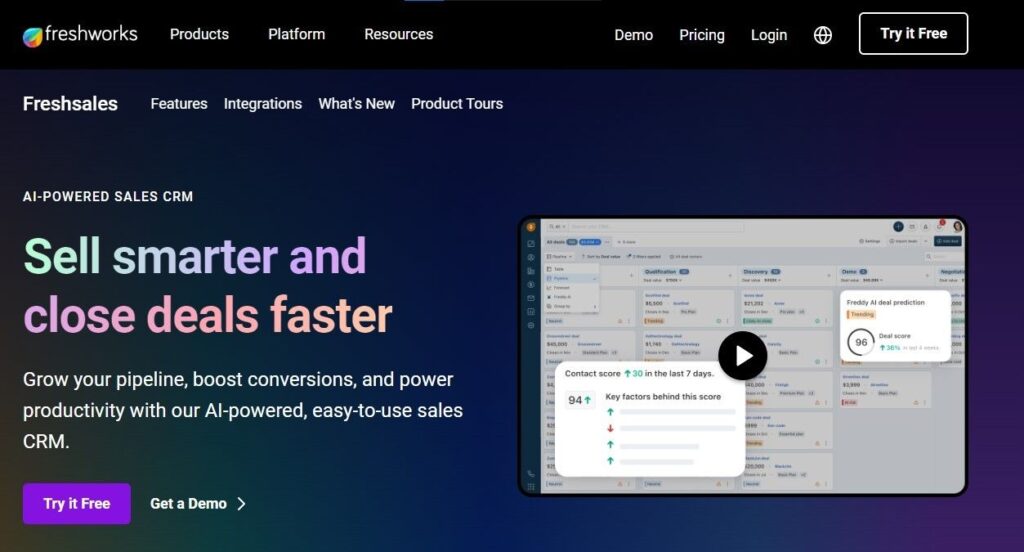
Freshsales is a sales optimization Software that helps sales teams simplify their sales process and improve performance.
It gives sales reps a clear view of their sales pipeline so they can track customer interactions, manage leads and automate tasks.
It’s a full-blown customer relationship management and sales productivity solution.
Key Features:
- AI lead scoring.
- Visual sales pipeline for lead tracking.
- Sales automation with built-in email and phone.
Pros
- ✓Simple to use for small and medium-sized sales teams.
- ✓ Built-in AI insights for sales reps to prioritize leads.
Cons
- −Limited customization for power users.
- −Higher tier plans can be expensive for small businesses.
Pricing:
- $10/user/month
2. Zoho CRM
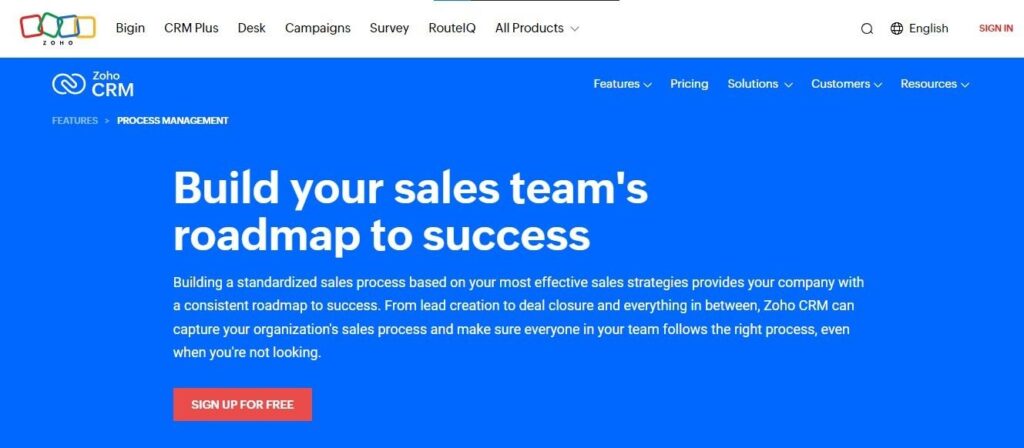
It’s a sales optimization software that helps sales teams simplify their sales process and improve performance.
Sales managers can see into customer data and sales strategy so they can make data driven decisions to drive revenue growth.
By simplifying sales, Zoho CRM helps businesses be more productive and maximize revenue.
Key Features:
- Sales automation and workflow management.
- AI sales forecasting and lead scoring.
- Multichannel customer communication tools.
Pros
- ✓Affordable for small businesses.
- ✓Strong integrations with other Zoho products.
Cons
- −Limited advanced reporting for larger teams.
- −Small learning curve for new users.
Pricing:
- Free plan
- Paid plans start at $15/user.
3. HubSpot

By giving sales professionals visibility into data, HubSpot helps drive revenue growth and sales productivity.
It’s a must have for sales managers who want to see into sales data and refine their sales strategy for better outcomes.
Key Features:
- Lead management and sales pipeline tracking.
- Sales automation and email tracking.
- Reporting and data-driven insights to optimize sales process.
Pros
- ✓Intuitive interface.
- ✓Excellent customer support.
Cons
- −Can become expensive as you scale.
- −Limited customization on lower-tier plans.
Pricing:
- Free plan available
- Paid plans start at $15/month.
Build trust & FOMO
Highlight real-time activities like reviews, sales & sign-ups.
4. Salesforce
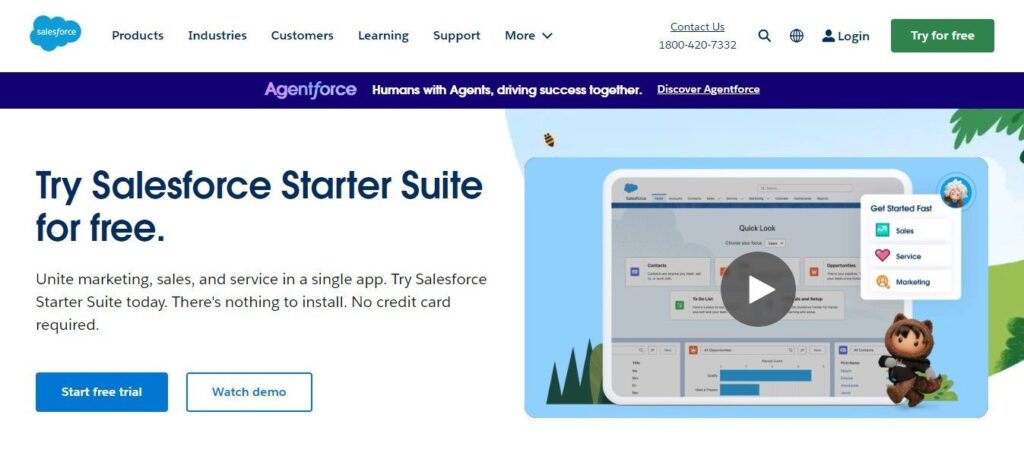
Salesforce is a full blown solution to help sales teams simplify their sales process and improve sales performance.
By simplifying customer relationship management and sales automation, sales reps can focus more on closing deals and less on repetitive sales tasks. With data driven insights sales managers can refine their sales strategy, improve sales productivity and drive revenue growth.
Salesforce also has lead management and sales pipeline tracking to improve customer interactions and maximize revenue.
Key Features:
- Full lead and opportunity management.
- AI sales forecasting.
- Customizable dashboards and reports.
Pros
- ✓Highly customizable.
- ✓Enterprise scalable.
Cons
- −Steep learning curve.
- −Expensive for small business.
Pricing:
- Plans start at $25/user.
5. LeadSquared
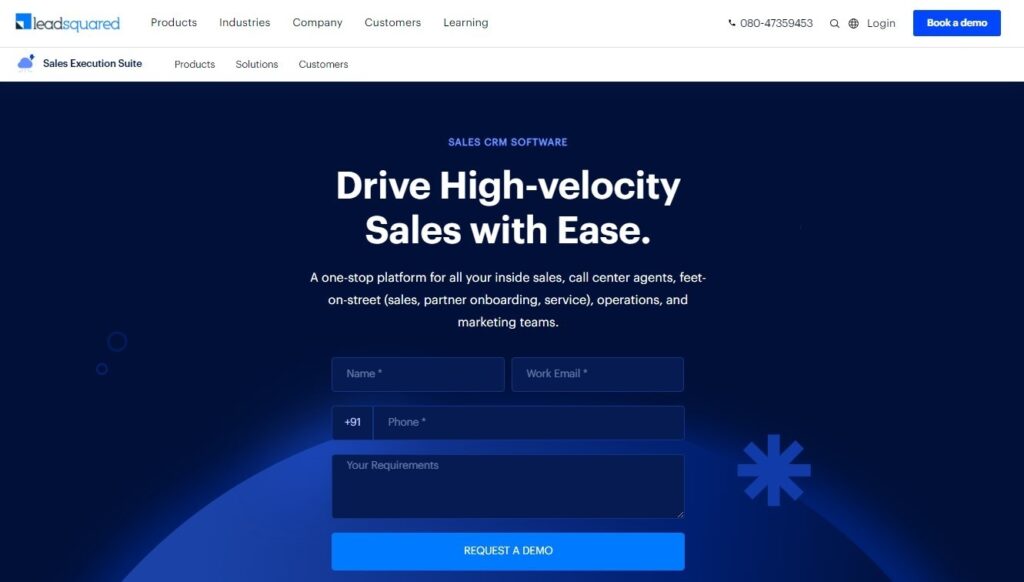
LeadSquared is a sales optimization software that helps sales teams simplify their sales process and improve overall performance.
Sales reps can use to manage customer relationships, automate tasks and see into sales data so they can have better sales strategy and more revenue.
This is for sales teams who want to improve customer interactions and grow business.
Key Features:
- Lead scoring and nurturing.
- Marketing automation integration.
- Sales pipeline management with real-time reporting.
Pros
- ✓Strong marketing automation integration.
- ✓Easy to use.
Cons
- −Limited customization for larger teams.
- −Customer support can be slow.
Pricing:
- Plans start at $25/user.
CRM & Sales Pipeline Management
6. Pipedrive
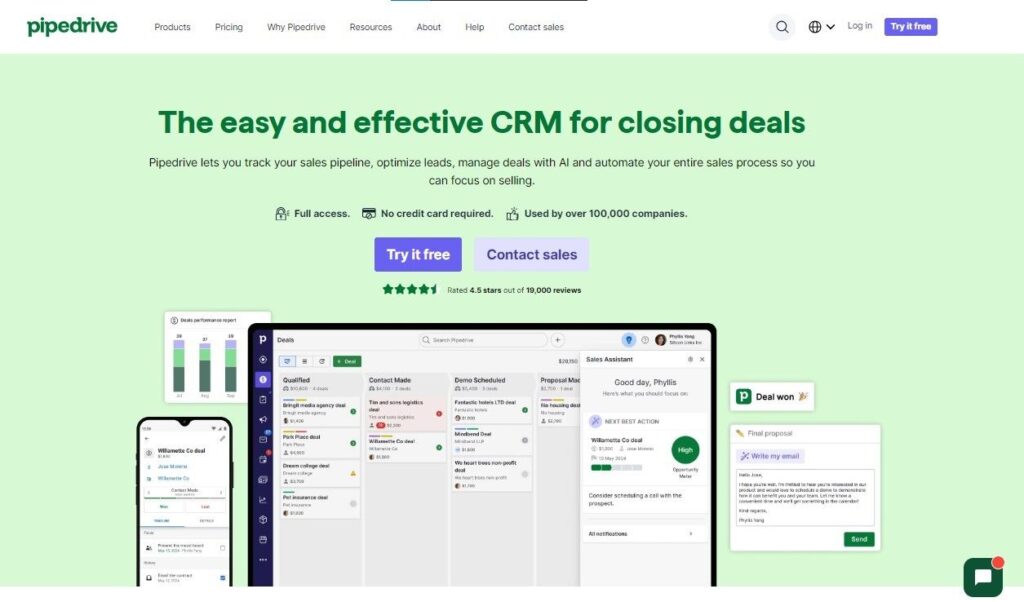
Pipedrive is a sales optimization software to help sales teams simplify their sales process.
Sales reps can manage customer relationships, track leads, and see into sales data to close deals faster.
With its sales pipeline management and automation focus Pipedrive gives sales managers the insights they need to refine their strategy and productivity across their team.
Key Features:
- Visual sales pipeline with drag-and-drop.
- Deal tracking and automation.
- Customizable reporting and forecasting.
Pros
- ✓Simple, intuitive interface.
- ✓Strong focus on deal management and sales process optimization.
Cons
- −Limited advanced features for large teams.
- −No free plan available.
Pricing:
- Plans start at $12.50/user/month.
7. MangoCRM
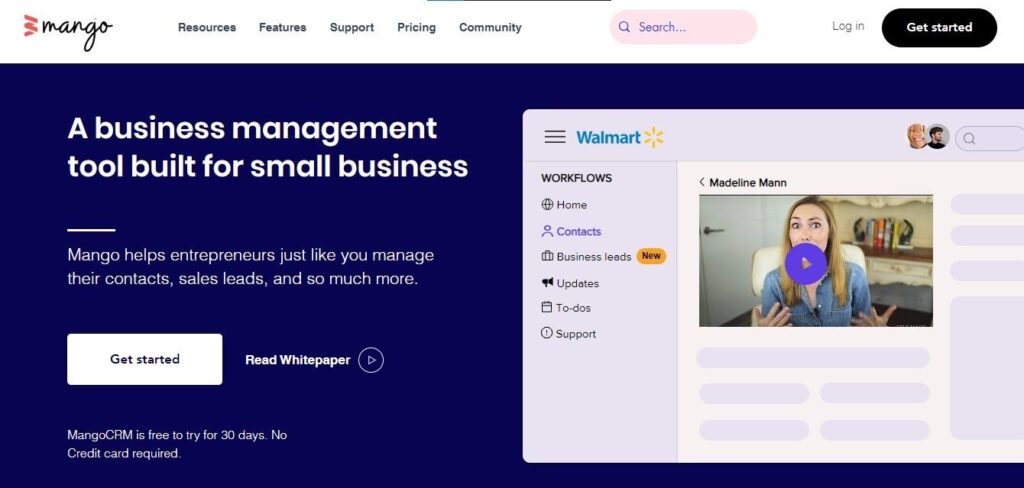
MangoCRM is a full sales tool to help sales teams streamline their sales process and increase sales performance.
By optimizing sales strategies and automating tasks, sales reps can focus on closing deals and customer relationships.
With tools to see sales data and track customer interactions, sales managers can drive revenue growth.
Key Features:
- Lead and opportunity tracking.
- Email follow-ups.
- Task management and reminders.
Pros
- ✓Easy to set up and use.
- ✓Affordable pricing.
Cons
- −Limited scalability for larger businesses.
- −Fewer advanced automation options.
Pricing:
- Plans start at $9/user/month.
Build trust & FOMO
Highlight real-time activities like reviews, sales & sign-ups.
Sales Engagement & Optimization
8. Outreach
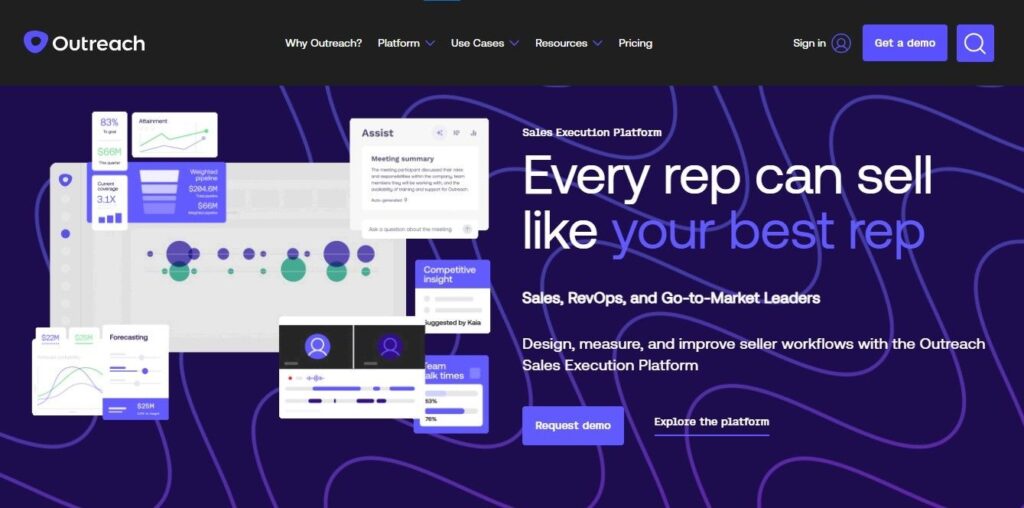
Outreach is a sales optimization tool to help sales teams streamline their sales process and be more productive.
Sales reps can focus on building stronger customer relationships and closing deals faster.
By organizing customer interactions and providing sales data insights, Outreach helps sales managers improve their team and the whole sales cycle.
Key Features:
- Automated sales sequences and task management.
- AI sales insights.
- Integration with CRM for workflows.
Pros
- ✓Great for automating follow-ups and outreach.
- ✓Data-driven insights into customer behavior.
Cons
- −Expensive for small business.
- −learning curve for new users.
Pricing:
- Custom pricing on request.
9. Close
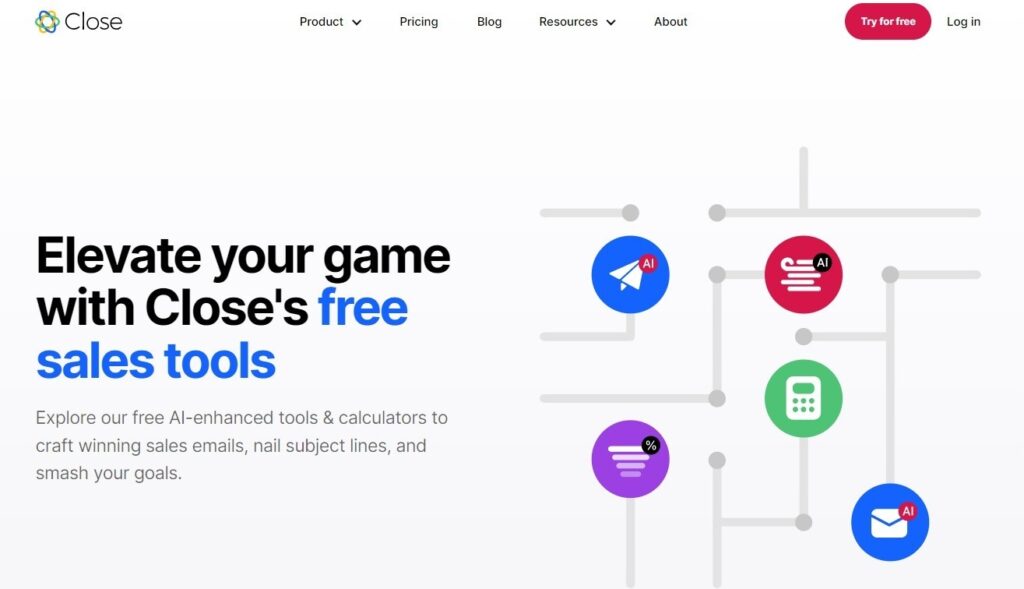
Close is a sales optimization tool to help sales teams streamline their sales process and increase performance.
By allowing businesses to manage customer relationships and sales pipelines more effectively, sales reps can focus on closing deals and revenue growth.
Key Features:
- Built-in calling, SMS, and email.
- Sales automation for follow-ups and tasks.
- Reporting for sales data and customer interactions.
Pros
- ✓Good for inside sales teams.
- ✓Easy to use with strong outreach tools.
Cons
- −Limited third-party app integration.
- −Pricing increases quickly with team size.
Pricing:
- Plans start at $49/user.
Lead Management & Sales Automation
10. ClickPoint
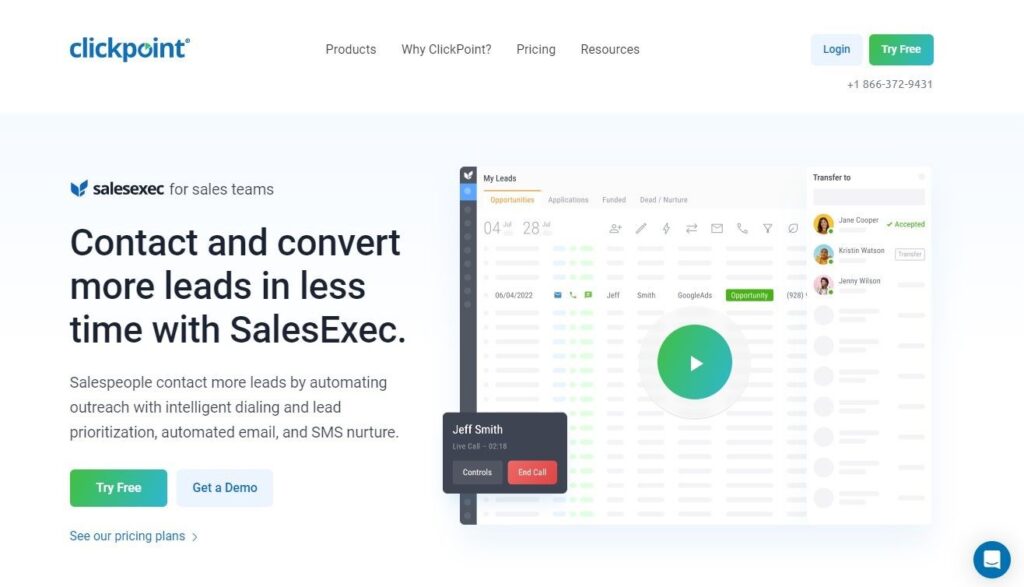
ClickPoint is sales optimization software that simplifies the sales process for sales teams.
It helps sales reps and sales managers automate tasks, see sales data, and optimize the sales pipeline.
By giving data-driven insights and automation, sales pros can focus on closing deals and revenue growth.
Key Features:
- Lead distribution and routing for sales teams.
- Automated follow-up sequences.
- Sales analytics and reporting for lead performance.
Pros
- ✓Good for high-volume lead management.
- ✓Automation reduces tasks for sales reps.
Cons
- −May require some technical setup for advanced automation.
- −Pricing is expensive for small businesses.
Pricing:
- Plans start at $65/user.
Also see: 50 Tested Conversion Optimization Tools to Boost Sales
How to Choose the Right Sales Software?
➥ Your Requirements
What do you want to optimize in your sales process? Do you want a tool for sales pipeline management, lead tracking, or sales automation? Do you need features like sales forecasting, lead management, or sales force automation to manage customer interactions and improve sales performance?
If your sales team want to increase productivity and close deals faster choose a tool that provides data driven insights and allows you to see sales data in real time.
➥ Ease of Use
Choose sales software that is easy for your sales reps and sales managers to use. A simple interface will allow your team to navigate sales funnels, track leads, and manage customer relationships without getting bogged down by too many features.
A easy to use tool means your sales organization can focus more on sales performance and customer satisfaction rather than struggling with the software.
➥ Integrates with Your Existing Tools
Make sure the sales software integrates with your existing CRM, marketing automation tools, and other business systems. This integration is key to tracking customer behavior, workflow automation,n and customer information across platforms.
The integration will streamline your sales process so your sales teams can get insights, track customer data, and optimize their overall sales strategy.
➥ Pricing
Compare pricing plans. Look for options that fit within your budget and have the features you need for sales optimization. Whether it’s lead scoring, sales forecasting, or repetitive task automation, make sure the tool provides value for your sales efforts and drives revenue growth.
Some tools offer free trials or basic plans, so your team can test the software before committing fully.
➥ User Reviews
Before you make a decision, read reviews from other businesses and sales professionals who have used the software. Look for feedback on ease of use, support, and how well the tool fits into their sales process.
Implementing a Sales Optimization Plan
Step 1: Know Your Sales Process
First step to implementing a sales optimization plan is to know your sales process. This means mapping out the sales funnel from lead gen to close.
Sales teams need to document each step in the customer journey so they capture all customer interactions and customer data.
This will help sales pros identify areas for improvement and where customers are dropping off.
Step 2: Review Sales Data
To optimize sales you must review your sales data. This means data on sales performance, customer relationships and sales operations.
Use sales analytics to get valuable insights into how your sales team is performing. Analyzing data will show you patterns in customer behavior, sales cycle length and effectiveness of your sales strategy.
Use data driven insights to make decisions to improve sales performance.
Step 3: Set Clear Goals
Next, you need to set clear goals for your sales teams. Whether it’s improving lead management, customer satisfaction, or revenue growth, clear goals will align your sales strategy with business growth.
Sales managers should work with sales reps to set measurable targets such as shortening the sales cycle, improving lead conversion rate, or increasing customer loyalty.
Step 4: Use Sales Optimization Tools
There are many sales optimization tools to simplify your sales operations. These tools allow sales teams to manage tasks like lead tracking, account management, and task management.
Sales force automation tools can handle repetitive sales tasks so sales reps can focus on higher value activities like nurturing leads and closing deals.
Tools with sales forecasting and sales CRM can also help sales leaders to see sales data and make data driven decisions.
Step 5: Automate Sales
One of the key to optimizing sales is to use sales automation. This means reducing time spent on routine tasks through workflow automation.
By automating processes like lead scoring, follow-ups, and sending marketing emails, sales teams can focus more on relationship building and customer management.
Marketing automation also helps to move leads through the sales pipeline faster.
Step 6: Train Your Sales Team
Any sales optimization plan will fail if your sales team is not trained. This means not only understanding the sales process but also how to use the sales optimization tools.
Training ensures your sales team can work within the optimized process and use sales CRM and lead management software to their full potential.
Continuous training should be part of your sales strategy to adapt to changing customer behavior and business processes.
Step 7: Measure and Adjust
Now that you have your plan in place the next step is to monitor your sales performance. Use sales analytics and data analytics to track against your goals.
Are you seeing improvement in customer satisfaction, sales productivity, and closing deals? Are your sales pros using sales automation and sales optimization tools to their full potential? If not, adjust your sales strategy and sales process based on the data.
Regular reviews will keep your sales optimization plan on track.
Step 8: Customer Success
Long term revenue growth is driven by customer success. As part of your overall sales process optimization your sales teams should focus on the customer lifecycle and customer experience.
Managing customer relationships well means repeat business, strong customer loyalty and more revenue. Use customer relationship management tools and focus on customer information to help with this.
Step 9: Scale and Grow
Now that you have your sales optimization plan in place, your business will be better equipped to scale and grow.
The combination of sales automation, sales productivity, and sales optimization tools will allow your sales organization to handle more customers and drive more revenue growth.
As you scale, keep optimizing your sales process to stay efficient and maximize revenue.
Mistakes to avoid
✖ When choosing and implementing sales optimization tools, here are some common mistakes to watch out for:
✖ Don’t choose a tool that is too complex for your team to use. If the software is overwhelming it will slow down your team rather than boost productivity.
✖ Make sure the software can grow with your business. You don’t want to outgrow your software in a few months, so choose a platform that can handle your future needs.
✖ Even the best software needs training. Invest in training your sales reps on how to use the tool effectively.
✖ Use the analytics and reporting features to track your sales performance and make adjustments.
Conclusion
Sales optimization software is a powerful tool that can help your business streamline sales processes, manage customer relationships, and drive revenue growth.
he right software will not only help you improve sales productivity but also give you valuable insights into your customers and how to optimize sales strategies.
Whether you’re looking for a comprehensive CRM like Salesforce or a more specialized solution like Pipedrive or Close, it’s essential to choose a platform that aligns with your business’s unique needs.
By investing in the right sales optimization tools and implementing a clear strategy, you can boost sales success and set your business up for long-term growth.







